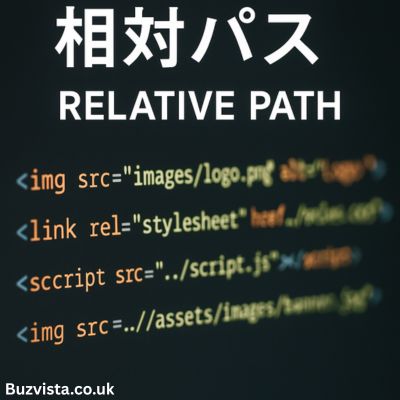In the digital age of coding, web development, and file management, one small but powerful concept is the path. Whether you are linking to an image, connecting a stylesheet, or referencing a script, how you define the location of that resource directly affects how smoothly your project runs.
In Japanese developer terminology, “soutaipasu” (相対パス) is the phrase used to describe what English developers know as the relative path. This concept may sound simple, yet it plays a critical role in making web projects portable, efficient, and organized.
This article takes a deep dive into soutaipasu, its meaning, its relationship with absolute paths, best practices, and why it matters in modern development.
What is Soutaipasu?
The Japanese term soutaipasu (相対パス) literally translates to “relative path.” In computing, a relative path refers to the location of a file relative to the position of the current file being executed or referenced.
Instead of giving a complete address (like https://example.com/images/logo.png), a relative path offers a shorter, context-based pointer such as images/logo.png.
Relative paths exist in nearly all operating systems and programming languages, but they are especially significant in web development when building folder structures that need to remain portable across local, staging, and production environments.
Soutaipasu vs. Zettaipasu (Absolute Path)
To fully understand soutaipasu, it helps to compare it to its counterpart: zettai pasu (絶対パス), or absolute path.
- Absolute Path (zettai pasu):
Refers to the complete address from the root directory or full URL.
Example:/var/www/html/css/style.cssorhttps://example.com/css/style.css. - Relative Path (soutaipasu):
Refers to a file location in relation to the current file.
Example:../css/style.cssif the current file is in a subdirectory.
Key difference:
Absolute paths are fixed and always point to the same location, while relative paths are flexible and shift depending on the current file’s position.
Examples of Soutaipasu in Action
- Current Folder Reference (
./)<script src="./script.js"></script>Here,script.jsis in the same folder as the HTML file. - Subfolder Reference
<img src="images/logo.png" alt="Logo">The image is stored in animagesfolder within the same directory. - Parent Directory Reference (
../)<link rel="stylesheet" href="../css/styles.css">The HTML file is in a subdirectory, but the CSS is one level above. - Nested Path Reference
<img src="../../assets/images/banner.jpg">This example climbs two directories up, then enters theassets/imagesfolder.
Why Use Soutaipasu?
1. Portability
When you move an entire project folder from local to production, relative paths keep internal references intact. You don’t need to rewrite links each time your domain or base URL changes.
2. Simplicity
Relative paths tend to be shorter and easier to write when referencing nearby files.
3. Collaboration-Friendly
In team environments, sharing code via GitHub or project archives is smoother with soutaipasu since developers don’t rely on machine-specific absolute paths.
Pitfalls and Limitations
While soutaipasu is powerful, it’s not without problems.
- Breaks on File Movement
If you move a file into another directory, all relative references inside it must be updated. - Context Dependency
Soutaipasu depends on the current working directory. If a server interprets the path differently than your local environment, files may break. - Deep Nesting Problems
Long chains like../../../assets/css/styles.cssare hard to read and maintain. - Base Tag Conflicts
In HTML, the<base>tag alters how relative paths are interpreted. If misused, it may break multiple links at once.
Best Practices for Using Soutaipasu
- Adopt Consistent Folder Structures
Define a clear hierarchy (/css,/js,/images) and stick to it. This reduces confusion when writing relative paths. - Use Root Paths in Larger Projects
For bigger sites or CMS-driven projects, consider root-relative paths (/assets/css/styles.css) for scalability. - Be Careful with Deep Nesting
Avoid placing files too deep inside multiple folders. A shallow structure simplifies relative linking. - Test in Different Environments
Always test soutaipasu links locally, on staging, and on production to ensure no directory mismatch occurs.
Soutaipasu in Different Contexts
- Web Development:
Primarily used in HTML, CSS, and JavaScript linking. - Command Line & File Systems:
Developers usecd ../to navigate directories relatively. - Programming Languages:
Languages like Python, Node.js, and PHP often load files using relative paths for modular imports.
Comparison Table
| Feature | Soutaipasu (Relative Path) | Zettaipasu (Absolute Path) |
|---|---|---|
| Definition | File path relative to current location | Complete path from root or domain |
| Portability | High – works across systems | Low – may break if directories/domains change |
| Readability | Shorter, cleaner (when shallow) | Longer, more explicit |
| Maintenance | Risky with file movements | More stable |
| Use Case | Local dev, small/medium projects | Large apps, fixed references, external assets |
Why Soutaipasu Matters in Modern Development
In today’s development environment—where projects often move between local machines, staging servers, and production hosting—flexible referencing is essential. Soutaipasu makes collaboration easier, allows projects to be moved without rewriting code, and keeps smaller projects efficient.
At the same time, absolute paths still have their place, especially when dealing with external assets, SEO-focused URLs, or canonical file structures. The smartest developers don’t choose one or the other blindly—they balance soutaipasu and zettaipasu strategically.
Conclusion
Soutaipasu (相対パス) may seem like a simple concept, but its proper use has a profound effect on project efficiency, scalability, and reliability. By mastering relative paths, developers ensure their projects are flexible, portable, and easier to manage.
Whether you’re just starting your coding journey or refining a professional workflow, pay attention to how you structure files and choose between soutaipasu and zettaipasu.
At the end of the day, paths are more than just directions for your files—they’re the roadmap of your project’s architecture.
This article is published on Buz Vista, your destination for insightful tech and development guides.

